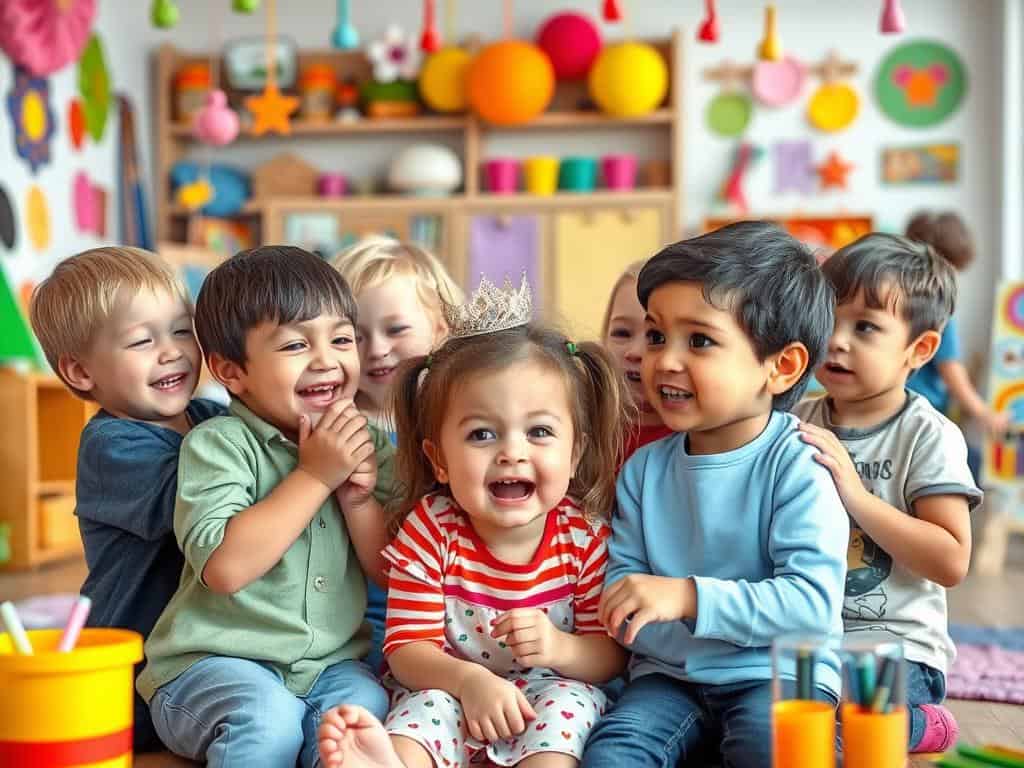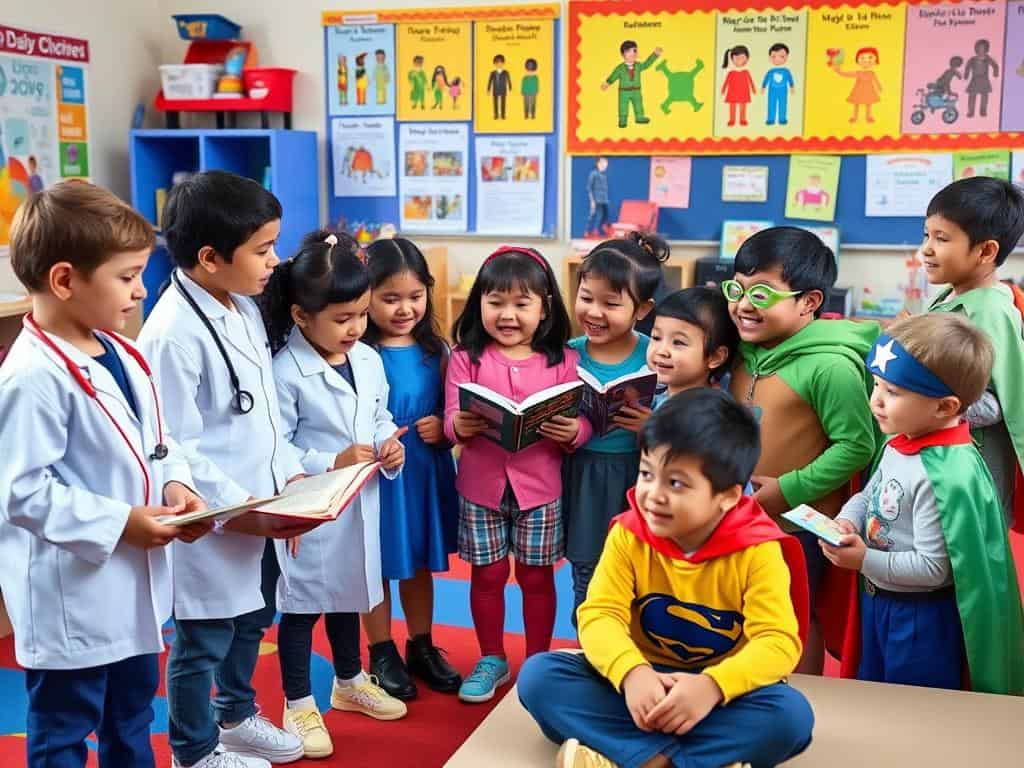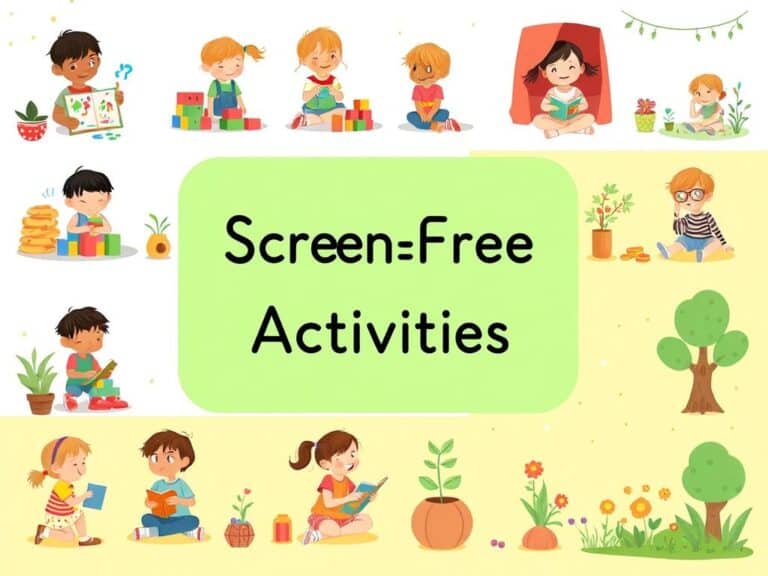12 Emotional Intelligence Activities to Boost Your Child’s Confidence
Crayola Color Wonder Magic Light Brush, Mess Free Painting Station for Kids, Toddler Toys & Activities, Holiday & Christmas Gifts for Kids, Ages 3+
$30.99 (as of December 1, 2025 15:32 GMT +00:00 - More infoProduct prices and availability are accurate as of the date/time indicated and are subject to change. Any price and availability information displayed on [relevant Amazon Site(s), as applicable] at the time of purchase will apply to the purchase of this product.)Hasbro Gaming Trouble Board Game for Kids Ages 5 and Up 2-4 Players
$9.84 (as of December 1, 2025 15:32 GMT +00:00 - More infoProduct prices and availability are accurate as of the date/time indicated and are subject to change. Any price and availability information displayed on [relevant Amazon Site(s), as applicable] at the time of purchase will apply to the purchase of this product.)Sorry! Board Game for Kids Ages 6 and Up; Classic Hasbro Board Game; Each Player Gets 4 Pawns; Family Game
$6.99 (as of December 1, 2025 15:32 GMT +00:00 - More infoProduct prices and availability are accurate as of the date/time indicated and are subject to change. Any price and availability information displayed on [relevant Amazon Site(s), as applicable] at the time of purchase will apply to the purchase of this product.)This post may contain affiliate links which means I may receive a commission for purchases made through links at no extra cost to you. I only recommend products I truly believe in. Thank you for your support!
As a parent or teacher, I understand how important emotional intelligence is for kids. It helps them grow up healthy and strong. That’s why I’ve put together fun activities to teach kids about empathy, resilience, and kindness.
Research shows that emotional intelligence helps kids do well in school. It’s more important than their IQ or how smart they are. By teaching these skills, we help our kids face life’s challenges with confidence and emotional smarts.
Key Takeaways
- Emotional intelligence activities can greatly improve a child’s confidence and self-esteem.
- These activities teach kids important skills like empathy, resilience, and problem-solving.
- Teaching emotional intelligence every day is more effective than just one lesson.
- Developing emotional intelligence is better for success than IQ or smarts.
- It’s very important for parents and teachers to help kids learn these skills.
Understanding Emotional Intelligence in Children

Emotional intelligence (EQ) is a set of skills kids can grow and get better at. These skills help with feeling good and doing well in life. EQ includes knowing oneself, getting along with others, being flexible, handling stress, and feeling good overall.
Each part has its own skills. These skills help with solving problems, being happy, and being flexible. They are key for emotional and social growth.
What is Emotional Intelligence?
Emotional intelligence is knowing and managing feelings. It’s about seeing feelings, using them to think, understanding their meanings, and controlling them. It helps kids learn and grow emotionally and intellectually.
Importance of Emotional Intelligence for Kids
Studies show EQ is very important for kids. It helps with school success and feeling good about oneself. EQ is better at predicting school success than IQ or thinking skills.
How Confidence is Linked to Emotional Intelligence
EQ and confidence go hand in hand for kids. Kids with high EQ have better friends, do well in school, and feel good about themselves. Games and activities that teach EQ can boost their confidence and happiness.
“Emotional intelligence is considered as important (or more) than IQ based on research. It can positively impact social relationships, work performance, and mental health.”
Activity 1: Emotion Charades

Teaching kids to be resilient and emotionally smart is key. Emotion Charades is a fun way to do this. It helps kids learn to show and guess emotions through actions and looks.
Materials Needed
You’ll need a list of emotions or emotion cards for this game. Include feelings like happiness, sadness, and fear. A wide range of emotions makes the game more interesting for kids.
How to Play
- Split the kids into two teams.
- Choose a child from the first team. They pick an emotion card or you whisper one to them.
- The child acts out the emotion without speaking.
- The other team tries to guess the emotion.
- If they guess right, the next child from the other team plays.
- The game keeps going, with teams switching roles.
Benefits of the Game
Emotion Charades helps kids in many ways. It makes them better at:
- Seeing and understanding different emotions
- Showing their own feelings through body language
- Working better in teams
- Empowering their emotional growth in a fun way
This game helps kids notice and understand emotions better. It’s a great way to help them grow emotionally and build strong social skills.
Activity 2: Feelings Journal

Journaling is a great way to teach kids about healthy feelings. It helps them understand and share their emotions. This makes them feel safe and understood.
Getting Started
Start by giving your child a special notebook. Tell them it’s for writing or drawing about their feelings every day. Ask them to say “I feel…” when they write. This helps them own their feelings.
Daily Reflection Prompts
- What was the best part of your day today?
- What was the most challenging part of your day?
- How do you feel right now as you’re writing in your journal?
- What is something you’re grateful for today?
Encouraging Expression
Tell your child that feelings change and it’s okay to feel them. Writing or drawing helps them understand and control their feelings. Be proud of them for trying and encourage them to be real about their feelings.
“Journaling is a powerful tool for developing emotional intelligence. It allows children to reflect on their feelings, process experiences, and build self-awareness – all key components of emotional well-being.”
This Feelings Journal activity is one of many ways to help kids grow emotionally. It boosts their confidence and helps them deal with feelings better. By teaching kids to understand and manage their emotions, we help them face life’s ups and downs with strength.
Activity 3: Role-Playing Scenarios

Social-emotional learning games help kids grow their emotional smarts. Role-playing is a great way to build self-esteem and confidence. It lets kids practice being assertive and dealing with emotions in a safe space.
Creating Realistic Scenarios
It’s key to make role-playing scenarios real for kids. Think about things like peer pressure, family expectations, or feeling let down. This way, kids can learn to handle real-life challenges.
Facilitating Discussion
After role-playing, talking it through is important. Ask kids to think about how characters could have acted differently. This helps them understand emotions and how to manage them.
Learning Outcomes
- Develop assertiveness and communication skills
- Practice managing emotions in challenging situations
- Enhance problem-solving and decision-making abilities
- Cultivate empathy and understanding for different perspectives
- Build confidence in navigating social-emotional scenarios
Role-playing helps kids learn valuable lessons. They get better at managing their emotions and feel more confident.
Activity 4: Empathy Mapping

Empathy mapping is key to growing emotional awareness in kids. It helps them see things from others’ viewpoints. This builds empathy and connection.
What is Empathy Mapping?
Empathy mapping is a visual activity. It lets kids imagine another person’s thoughts and feelings. They learn how others see and deal with their world.
Steps to Create an Empathy Map
- Choose a person or character to explore. It could be a friend, family member, or a book character.
- Think about what the person might think in a situation. What are their thoughts, beliefs, and worries?
- Consider the person’s feelings. What emotions might they feel, both good and bad?
- Think about what the person might say in the situation. How would they share their thoughts and feelings?
- Picture the person’s actions. How might they act or react physically in the situation?
Enhancing Perspective-Taking
Empathy mapping helps kids understand others better. It makes them more empathetic and emotionally aware. By seeing things from different viewpoints, they learn to connect better with others.
Activity 5: Positive Affirmation Sessions
Building a child’s confidence and self-esteem is key for their emotional health and growth. Positive affirmation sessions are a great way to do this. They involve making affirmations together, focusing on the child’s strengths and talents.
Crafting Affirmations Together
Begin by sitting with your child and making a list of affirmations that feel right to them. Let them share their thoughts and feelings. Work together to make empowering statements. Here are some examples:
- I am capable and confident.
- I have the courage to try new things.
- My mistakes help me learn and grow.
- I am proud of myself for my efforts.
Daily Affirmation Practices
Adding daily affirmations to your child’s routine can greatly boost their confidence. Encourage them to say their affirmations out loud or write them in a journal. This helps them remember the positive messages and builds a strong self-image.
The Impact on Confidence
Positive affirmation sessions are a strong tool for building self-esteem in children and improving their emotional intelligence. By focusing on their strengths, kids learn their worth and gain confidence. These confidence-boosting activities for youth help them grow and stay well.
“Affirmations are our mental vitamins, providing the supplementary positive thoughts we need to balance the barrage of negative events and thoughts we experience daily.”
– Tia Walker
Activity 6: Collaborative Storytelling
Collaborative storytelling is a fun game that helps kids grow emotionally. It teaches them to be creative, share, and work together. Kids learn to listen well, understand others, and share their own stories.
How to Get Started
Start with a simple story idea. Ask each child to add their own special part. This way, kids learn to work together and use their imagination.
Encouraging Creativity and Sharing
- Ask kids to use different voices for characters.
- Help them think about how characters might feel.
- Remind them to take turns, so everyone feels included.
Benefits of Group Engagement
Storytelling helps kids learn important skills like:
active listening, empathy, and problem-solving. Working together, they learn to see things from others’ points of view. This helps them feel part of a group and boosts their confidence.
“Storytelling is a powerful tool that allows children to explore their emotions, build relationships, and develop crucial life skills.”
By using storytelling in learning, kids become more confident and emotionally smart. They’re ready to face the world’s challenges.
Activity 7: Guided Emotion Walks
Teaching kids about emotions is key for their growth. Guided emotion walks are a fun way to do this. They help kids link their feelings to nature, teaching them to be mindful and understand their emotions better.
Planning Your Walk
Start by picking a calm, natural spot for your walk. It could be a park, garden, or quiet street. Think about adding things that might make different feelings, like a stream, big tree, or colorful flowers.
Identifying Emotions in Nature
- Tell your child to look around and see how nature makes them feel.
- For instance, trees swaying can calm them, while waves crashing can excite them.
- Talk about these feelings and how they relate to what they see and hear.
Connecting with Surroundings
This walk is more than just feeling emotions. It’s about feeling close to nature too. Ask your child to use all their senses, like feeling the breeze, smelling flowers, or hearing birds.
By really experiencing their surroundings, kids learn to handle their feelings better. They grow emotionally aware and resilient, skills they’ll use throughout life.
“Connecting with nature is a powerful way to help children understand and manage their emotions. The guided emotion walk allows them to explore the world around them while developing emotional regulation strategies for a lifetime.”
Activity 8: Art and Emotion Connection
Teaching kids about emotional intelligence is key for their self-esteem and confidence. Art and emotion connection activities are great for this. They let kids express their feelings and understand them better.
Materials Needed for the Activity
You’ll need art supplies like paint, crayons, markers, clay, or collage stuff. These materials let kids show their emotions in creative ways.
Expressing Emotions Through Art
Ask kids to make art that shows how they feel. They might paint their happiness, sadness, or anger. About 95% of kids learn by seeing, so it’s important for adults to show healthy feelings.
Sharing Creations
When the art is done, let kids share it with everyone. Ask them to talk about the feelings in their art. This helps them share and feel supported.
“Research shows kids who share their feelings safely grow 85% more emotionally intelligent.”
Art helps kids improve their emotional skills, feel better about themselves, and understand their feelings. Making and sharing art is a powerful way to help them feel and express their emotions.
Activity 9: Group Discussions on Challenges
Helping kids grow emotionally and be resilient means giving them a safe place to talk about their struggles. Talking about things like feeling sad, getting angry, or fighting with friends helps a lot. It’s a great way to empower children’s emotional growth and nurturing resilience in young minds.
Setting a Safe Space
Creating a cozy and private area where kids can share their feelings is key. Make sure they feel safe and respected. This space helps kids open up and connect with others.
Topics to Discuss
- Dealing with disappointment or failure
- Managing strong emotions like anger or sadness
- Resolving conflicts with friends or family members
- Overcoming fears and anxieties
- Developing healthy coping strategies
Building Supportive Relationships
Through these talks, kids learn to understand and support each other. They find common ground and grow closer. This helps them develop social-emotional learning games and nurtures resilience in young minds.
By making a safe space for group talks, you help kids grow emotionally. They learn to handle their feelings and make friends. This is a big help as they grow and face new challenges.
Conclusion: Investing in Emotional Intelligence for Lasting Confidence
Doing emotional intelligence exercises can really help kids feel more confident and happy. We’ve talked about fun activities like Emotion Charades and Feelings Journals. These help kids understand their feelings, be kind, and solve problems.
Recap of Activities
We’ve looked at many ways to boost kids’ confidence. Activities like role-playing and storytelling help them share feelings and make friends. These skills help kids face challenges and do well in school and life.
Continued Engagement and Support
Helping kids grow emotionally is a long-term job. Parents, teachers, and the community must keep supporting them. By making these activities part of daily life, we help kids build lasting confidence and strength.
The Long-Term Benefits of Emotional Intelligence
Teaching kids about emotional intelligence is very important. It helps them do well in school, make good friends, and succeed in their careers. By focusing on emotional smarts, we help our kids lead happy, successful lives.











